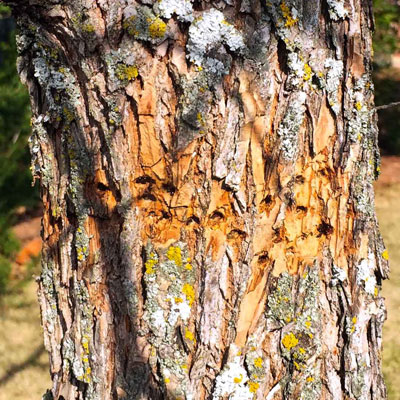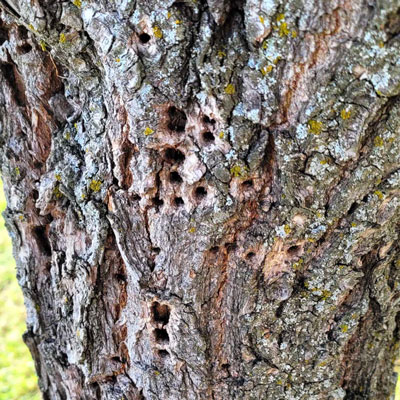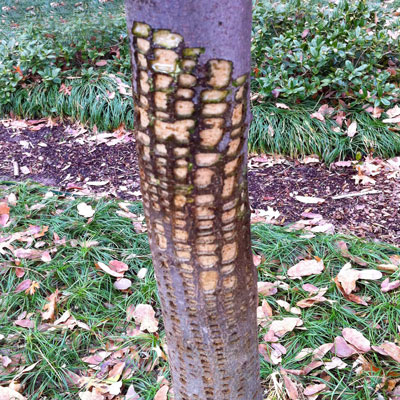Question of the Week: June 3, 2021
“What is riddling the trunk of my tree? Will it do serious harm? How can I stop it?”

Pine 
Pecan 
Willow
Anytime you see rows of holes in the trunk or branches of one of your oaks, pecans or other trees, you know that a yellow-bellied sapsucker has been visiting. The holes will be in rows as if a machine gun had first across them.

These woodpecker relatives, in spite of their name, are mostly black and white with bright red markings on their heads. They have a faint hint of yellow on their bellies. They are also the only eastern woodpeckers that migrate. They are in Texas during the winter, so that is when the holes will be drilled. But gardeners are really noticing the holes in the trunks now.
Deep, round holes produce sap that they sip by inserting their beaks and tongues completely into the holes. They also make square holes and later come back to lick the sap that is produced. Hummingbirds are also known to feed on the sap.

From a gardener’s perspective, sapsuckers rarely do measurable damage to larger trees. However, I have experienced loss of entire trunks of several hollies in my landscape when an especially eager sapsucker must have spent hours on each trunk. I ended up using paper tree wrap to protect my plants. Two years later, when I removed the wrap, the bird came right back. So, they can be frustrating and there is nothing you can do to hurt them. They are protected by law.
And, just to finish it all up, borers also cause holes in tree trunks as their larvae pupate and emerge as adult insects. However, those holes will always be randomly spaced on the trunks of the trees compared to the regular arrangement of the holes left by sapsuckers.
